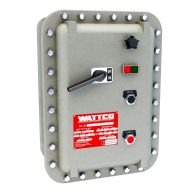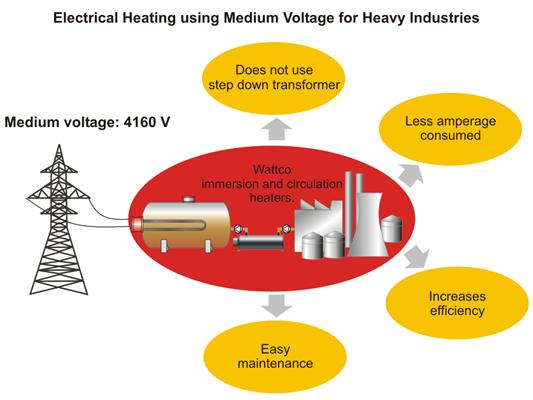How to Reduce Heating Costs for Circulation Heaters
Last updated on May 19th, 2025 at 05:37 am
Heating is an essential task in most industrial applications. Operating on a large scale, any energy wastage comes with a large price tag. Efficient heat application means big savings in any industry. One of the reasons that circulation heaters are so widely used is their efficiency. Immersed in the medium they are heating, they can provide direct heating. Direct heating offers excellent heat transfer. That makes heating more efficient, and less expensive. Getting the most efficiency out of your circulation heater means more savings and better efficiency. In this article, we examine how to reduce heating costs for circulation heaters.
Proper Insulation for Circulation Heaters
Insulation is one of the simplest and effective ways to reduce heating costs. When pipes and applications are not properly insulated, heat is lost. That means your circulation heater has to work harder and use more energy to maintain required temperatures. Without insulation, heat is constantly being lost.
So instead of your circulation heater maintaining temperature normally, it is constantly reheating. It’s like a car constantly accelerating instead of keeping a steady speed. The energy use is much higher, directly increasing your heating costs. By ensuring proper insulation of applications, you can reduce operating costs for your circulation heaters.
Electric Circulation Heaters vs. Combustible Circulation Heaters
The heating method your circulation heater uses has a direct impact on efficiency and costs. Using electricity to power circulation heaters is both more efficient and more cost-efficient. The rising cost of natural gas is making combustible circulation heaters more expensive every year.
But it’s not just energy costs that make electric a more economical option. Natural gas heating is inefficient, losing 60-70% of potential energy. Electric circulation heaters use electric resistance heating, a process that is 100% efficient. With electricity, the only loss of energy is in the delivery from the power plant. The closer your facility to the electricity source, the less energy lost.
The amount of electricity lost in shipping ranges from 2.2% to 13%. With shipping included, that means electric circulation heaters are 87% to 97.8% efficient. Whereas fuel circulation heaters are only 32% to 38% efficient, and that doesn’t include fuel delivery costs. By choosing electric circulation heaters your operation can save on heating costs with more efficient processes. You also lessen the environmental impact.
Automated Circulation Heater Controls
In modern applications, automation is one of the biggest money savers available. Perhaps the most apparent economic advantage of automation is the reduction of manpower. Certainly, using automation in processes means you do not need to pay to hire as many people. But that is only one benefit. Automated temperature controls for circulation heaters make them more efficient and safer. 
Using an automated temperature control panel is the most reliable control solution. Temperature is monitored constantly and the circulation heater’s operation is adjusted accordingly. This keeps operations working at maximum efficiency at all times. It also ensures that the heated medium is maintained at the desired temperature range.
This protects both the equipment and the medium being heated. Temperature control panels are also designed for safety. They can be outfitted with a shutdown switch to halt operation immediately if the temperature rises above the desired or safe range.
They can be outfitted with all sorts of safety precautions, including an explosion-proof housing. These safety precautions prevent damage that could result in temporary or permanent shut down of operations. Automated temperature control panels can also be set up for intermittent heating.
Intermittent Circulation Heating
Intermittent heating is a good cost saving option if heat is not required all day. This strategy involves only heating when it is required. One of the common uses for intermittent circulation heating is in space heating processes. Heating space can become expensive. So when these spaces are not in use, it is best to shut the power off.
For example, one of the uses for circulation heaters in agriculture is equipment warming. Equipment warming is great for protecting the long-term operation of machinery, but it is not required all day long. If machinery is being used at the same time each day, intermittent heating can be used to warm up equipment before this time and shut off while the equipment is out being used.
Choosing an Efficient Temperature for Circulation Heaters
The temperature a circulation heater is set to achieve determines how much energy it uses. Generally the higher the temperature, the higher the heating cost. But that is not the only factor. The disparity between the external temperature and the heated temperature changes the required energy.
In a warmer climate, less energy is required to get up to and maintain temperature, since the baseline temperature is already higher. By setting your temperature control panel in accordance with the local environment, you can reduce circulation heater costs. A good example of this was in Wattco’s use of circulation heaters for freeze protection in Alaska.
One of the main goals for these electric circulation heaters was to maintain the temperature above freezing. To achieve this we chose to use circulation heaters with flanged elements. The average annual temperature in Alaska is 37०F, so the control panels were set to maintain 37०F inside the tanks. This allowed the circulation heaters to work more passively. Less energy was required to maintain this temperature, resulting in lower heating costs.
Choosing the Right Wattage & Voltage for Circulation Heaters
The cost of the circulation heater itself is another consideration to reduce costs. By matching the wattage and voltage to the process, the operational and upfront costs can be reduced. For circulation heaters, the lower the watt density, the higher the unit cost.
By getting the right watt density for your circulation heater you not only get a more efficient process, you also save on the heater itself. The most economic options for heavy industries are medium voltage solutions. These are ideal for a lot of heavy industries high wattage heating elements are required. By using medium voltage they can save heating and installation costs by:
- Avoiding the need for installing step down transformers
- Consuming less amperage
- Increasing efficiency
- Providing easy maintenance
Circulation Heater Materials
Another cost to consider for circulation heaters are the materials used. Stainless steel, steel, and titanium are the most common circulation heater materials. The material chosen will affect the upfront cost of the heater. With a 20 year lifespan, more money is saved by matching the material to the application than based on price alone. Steel, for example, is a common choice because it is relatively inexpensive.
However, for heating corrosive mediums, stainless steel can be a more economical choice. Stainless steel has greater corrosion resistance, so it will require less maintenance and provide better longevity. That means long-term, it can be less costly than using steel.
Also read: Applications of Circulation Heaters in the Agriculture Industry
Circulation Heater Maintenance & Cleaning
In the interest of protecting longevity, regular maintenance and cleaning mean long-term savings for your circulation heaters. Taking advantage of proper heater maintenance maximizes lifespan and efficiency. Regular checks and cleaning prevent a buildup of sediment or corrosion. Corrosion can shorten your heater’s lifespan directly.
Sediment buildup reduces efficiency. A circulation heater covered in sediment has to work extra hard to maintain temperature. This places added stress on the system, reducing its lifespan. By providing regular checks these issues can be minimized or avoided altogether. Cleaning can often be done simply with a damp cloth or a power washer.
Reduce Heating Costs With Wattco Circulation Heaters
Wattco electric circulation heaters are custom fitted to the specific needs of your application. As a result, they are efficient, cost-effective, and reliable options. Browse the circulation heater catalog or contact Wattco today to request information.

